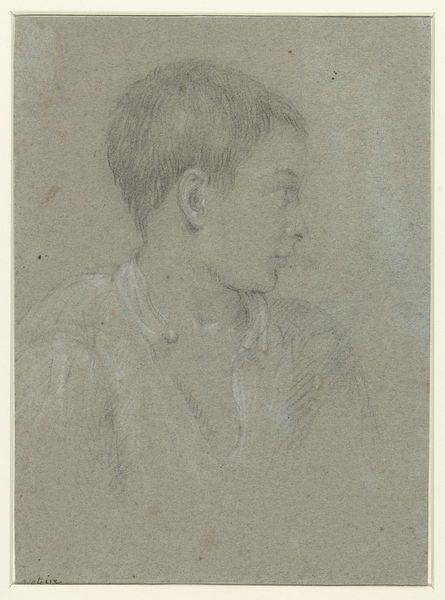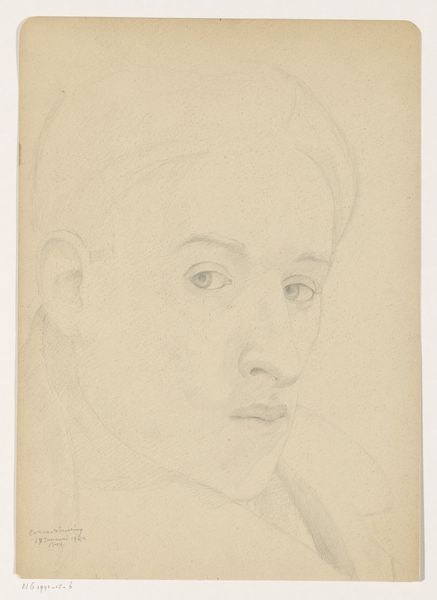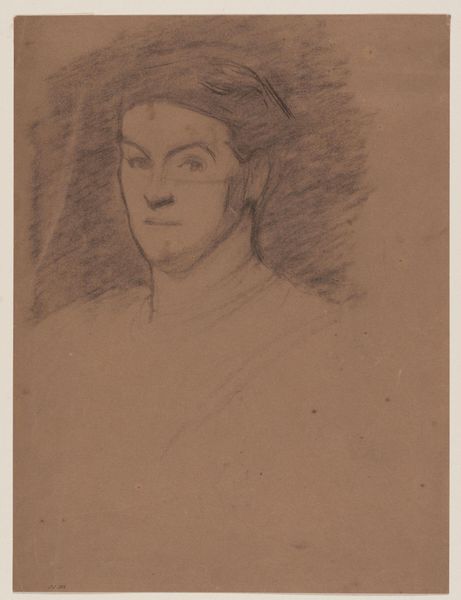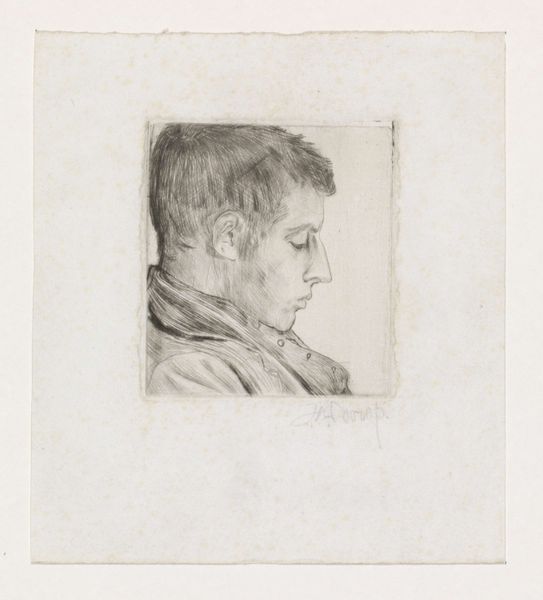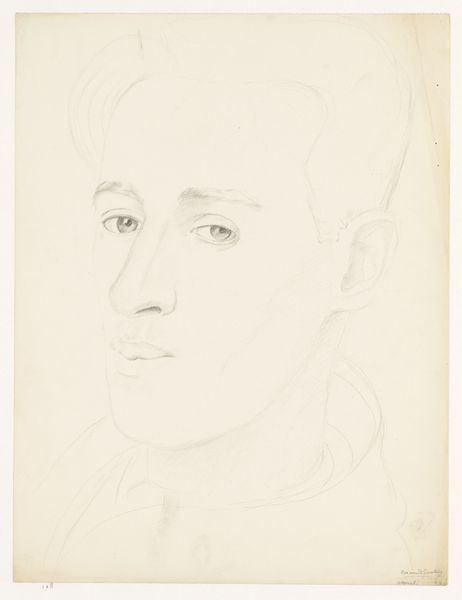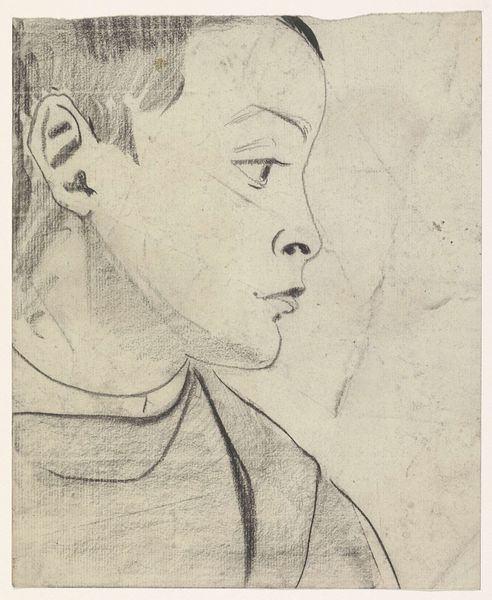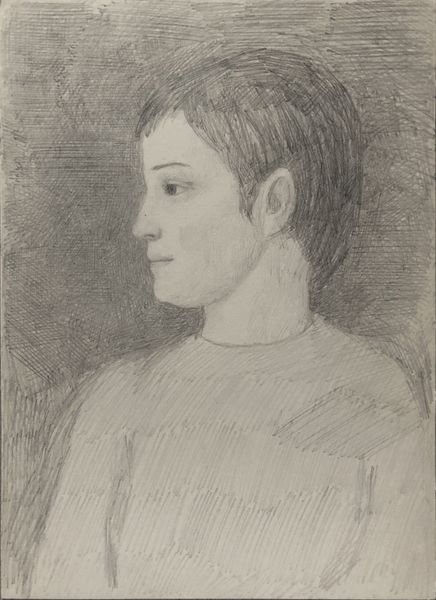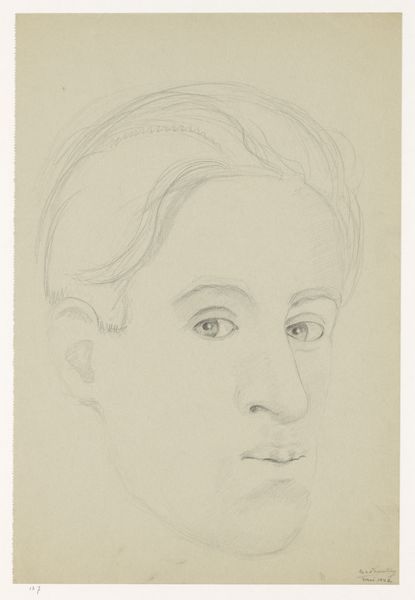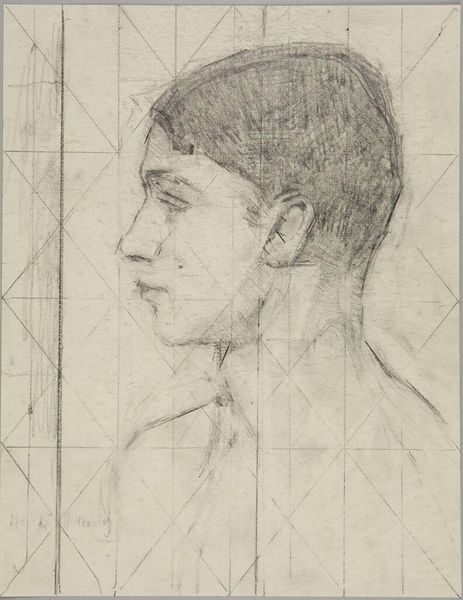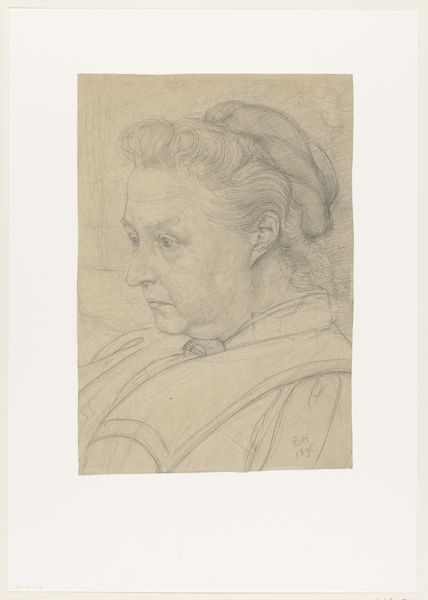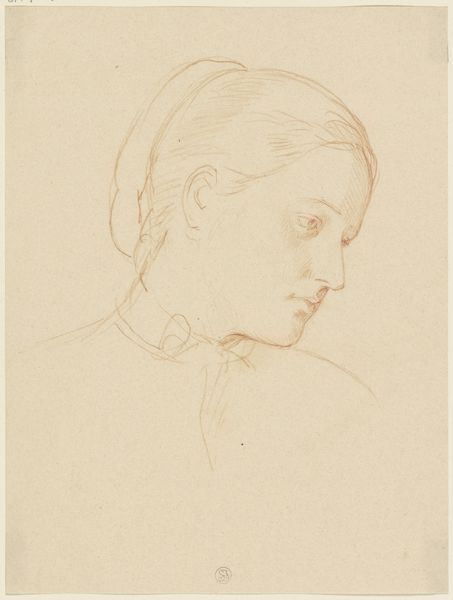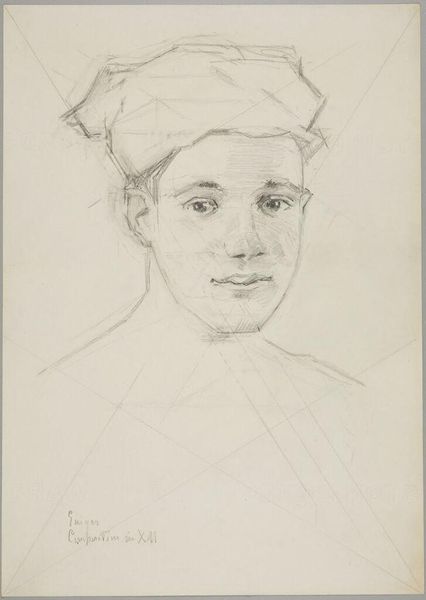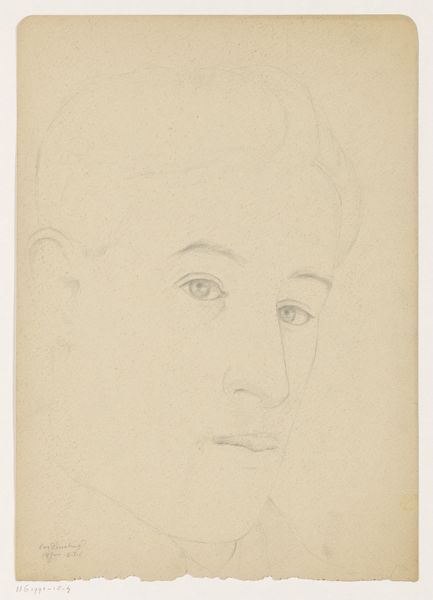
drawing, pencil
#
portrait
#
pencil drawn
#
drawing
#
amateur sketch
#
toned paper
#
light pencil work
#
pencil sketch
#
personal sketchbook
#
portrait reference
#
pencil
#
sketchbook drawing
#
portrait drawing
#
pencil work
#
modernism
#
realism
Dimensions: height 315 mm, width 240 mm
Copyright: Rijks Museum: Open Domain
Curator: Welcome. We are standing before Jan Veth’s "Portret van Johanna Veth," a pencil drawing from 1874 to 1925, held here at the Rijksmuseum. Editor: It strikes me as very intimate, almost hesitant. The light pencil work and toned paper create a muted, melancholic atmosphere. Curator: Note the subtle realism. The delicate gradations of tone skillfully model her features, giving volume to the planar structure of the face and revealing his dedication to a realistic representation of the subject's physiognomy. Editor: I see it as a study in the constraints placed upon women, especially intellectual women of that era. Johanna Veth was a talented artist and writer in her own right. Did she feel overshadowed by her husband’s success, or societal expectations of her gender? Curator: The texture and weight of the laid paper complement Veth’s use of pencil to emphasize line and form. He eschews dramatic chiaroscuro for a more subdued, almost ethereal effect. Observe how her gaze intersects with the top of the artwork at the edge, forming a horizontal alignment from her left brow through the composition's grid and suggesting that the format's limits constrain her within its space. Editor: The muted tones of the drawing could be a conscious decision, a form of visual resistance to the more vibrant and celebratory portraits typically associated with male subjects of the time. Curator: I would counter that by noting how her personality radiates through. It’s more about Veth capturing a specific likeness. Notice how his subtle modeling describes her features. The effect captures her essence on the page, beyond the symbolic. Editor: Even in the subtlest portraits, we can find threads of resistance, subtle commentary on the limitations imposed upon individuals by societal norms. This drawing then serves as a tribute not only to Johanna, but to the unrecognized labor and artistry of many women during this time period. Curator: Perhaps, or maybe it's a moment captured, expertly rendered with line and shadow, of a private, human moment beyond overt political concerns. Editor: And that complexity, that ambiguity, is precisely what makes it so compelling, wouldn't you agree? Curator: Indubitably. It presents many avenues for exploration.
Comments
No comments
Be the first to comment and join the conversation on the ultimate creative platform.
